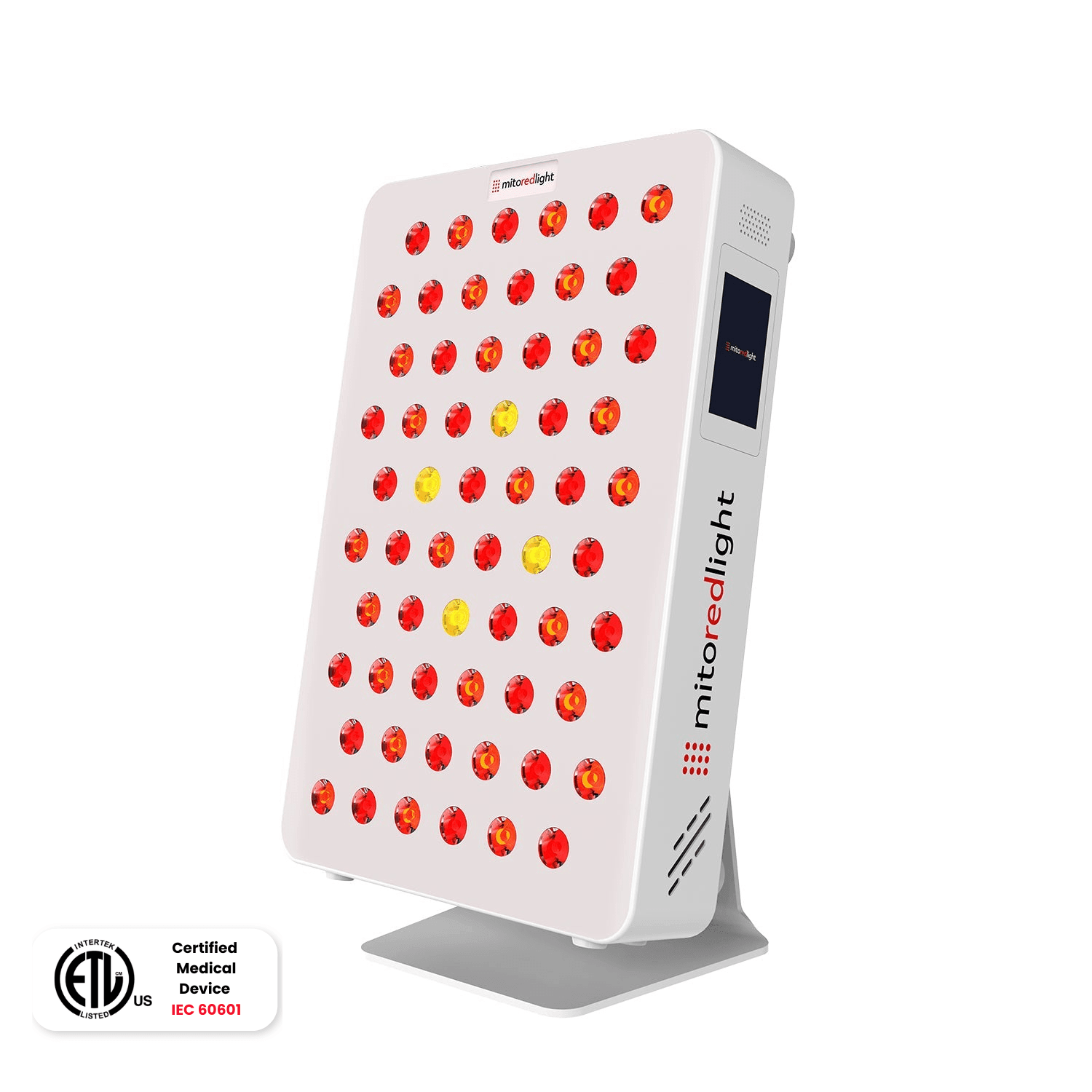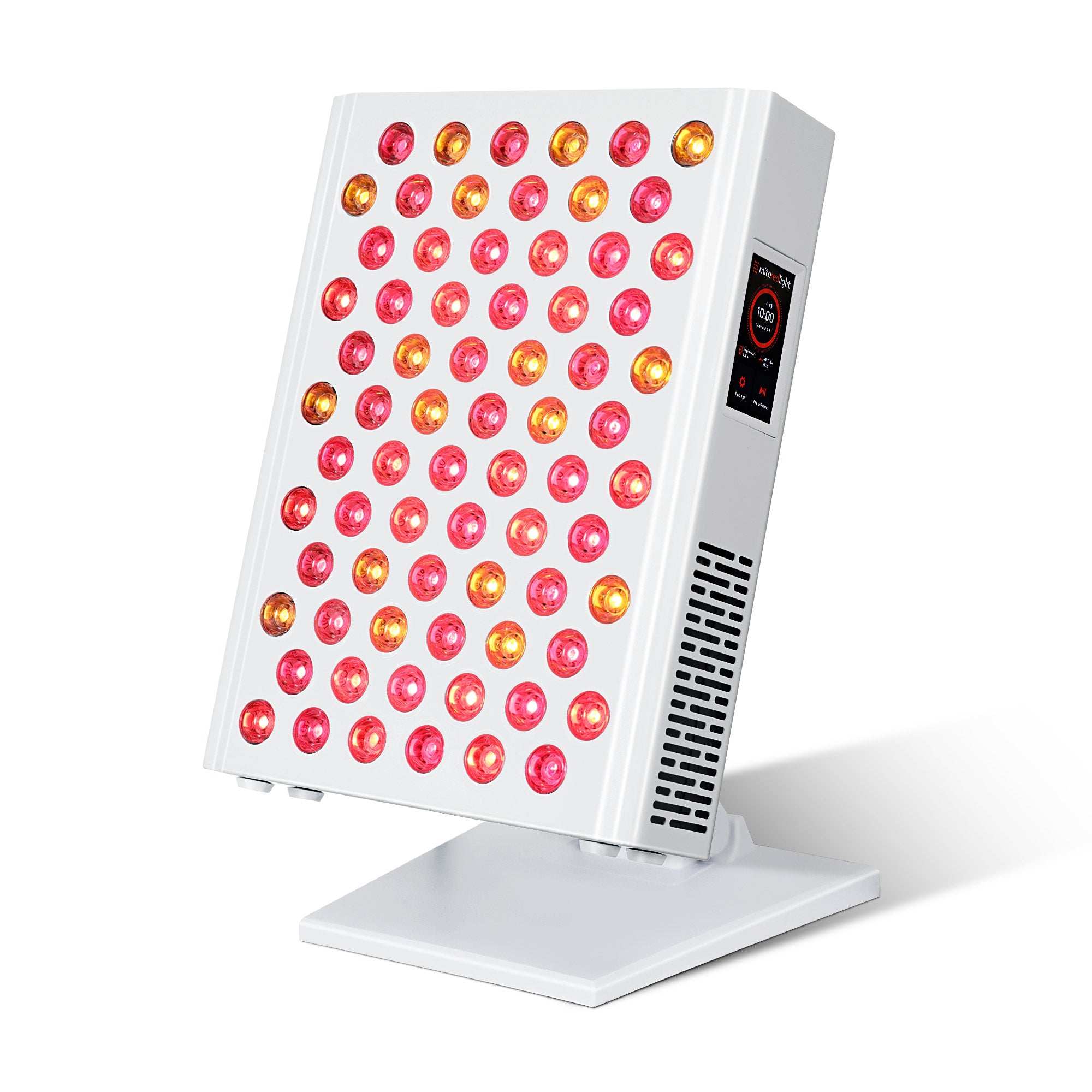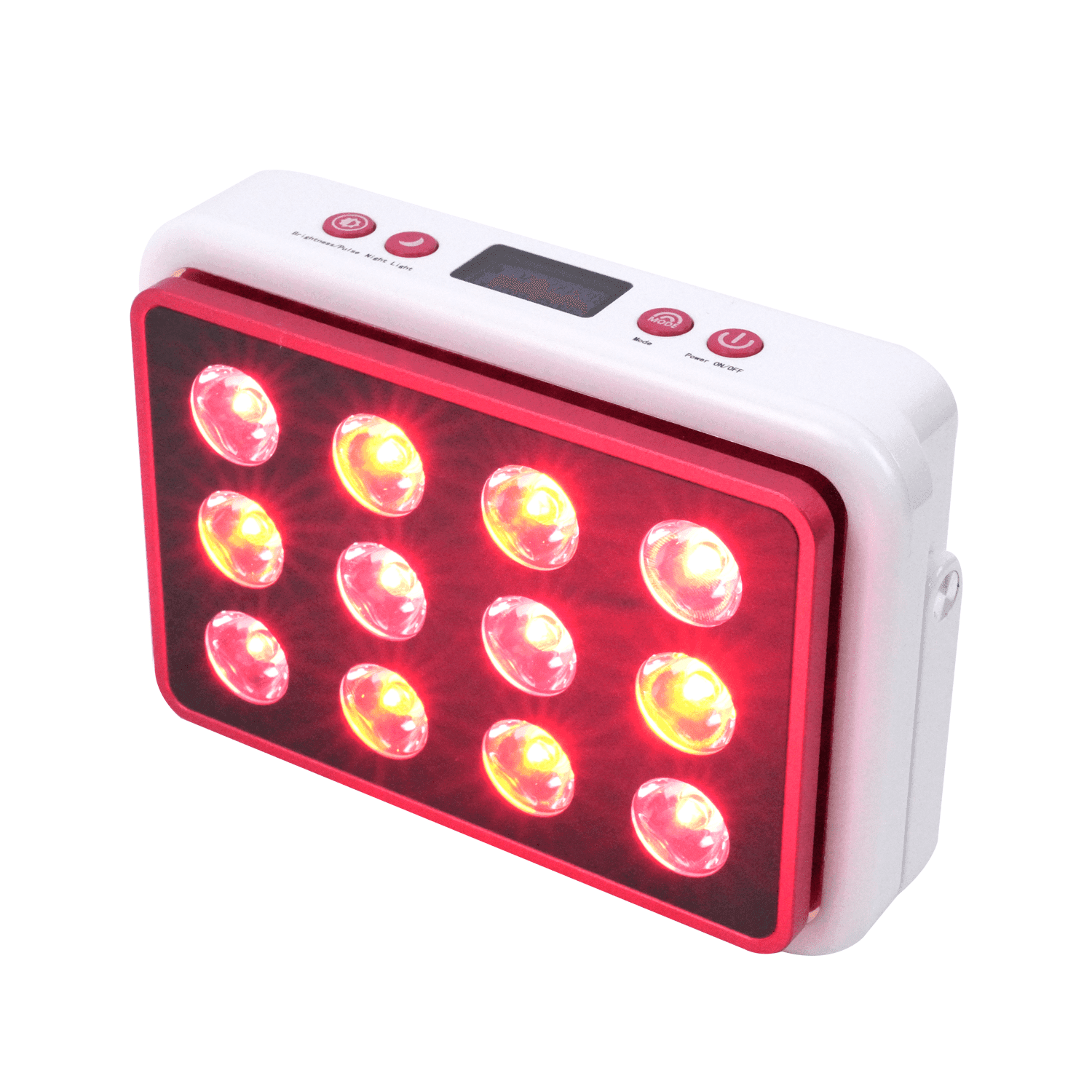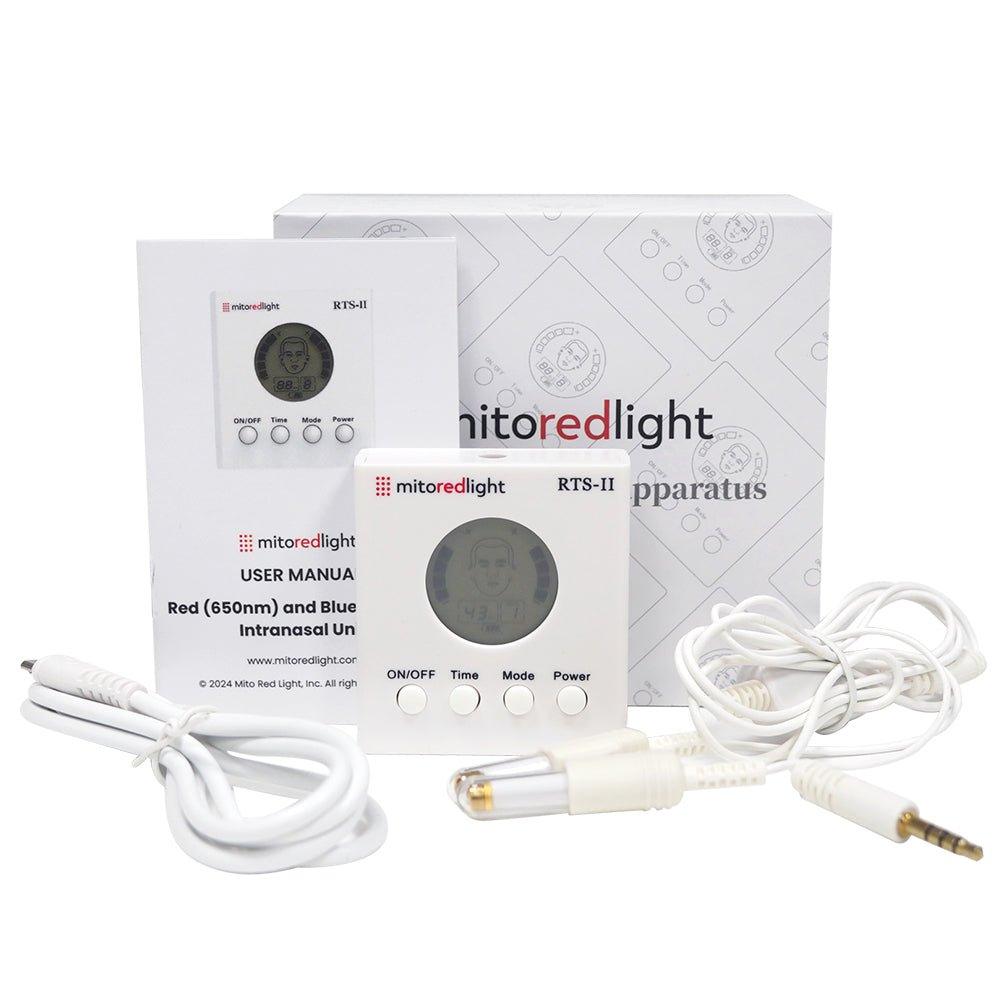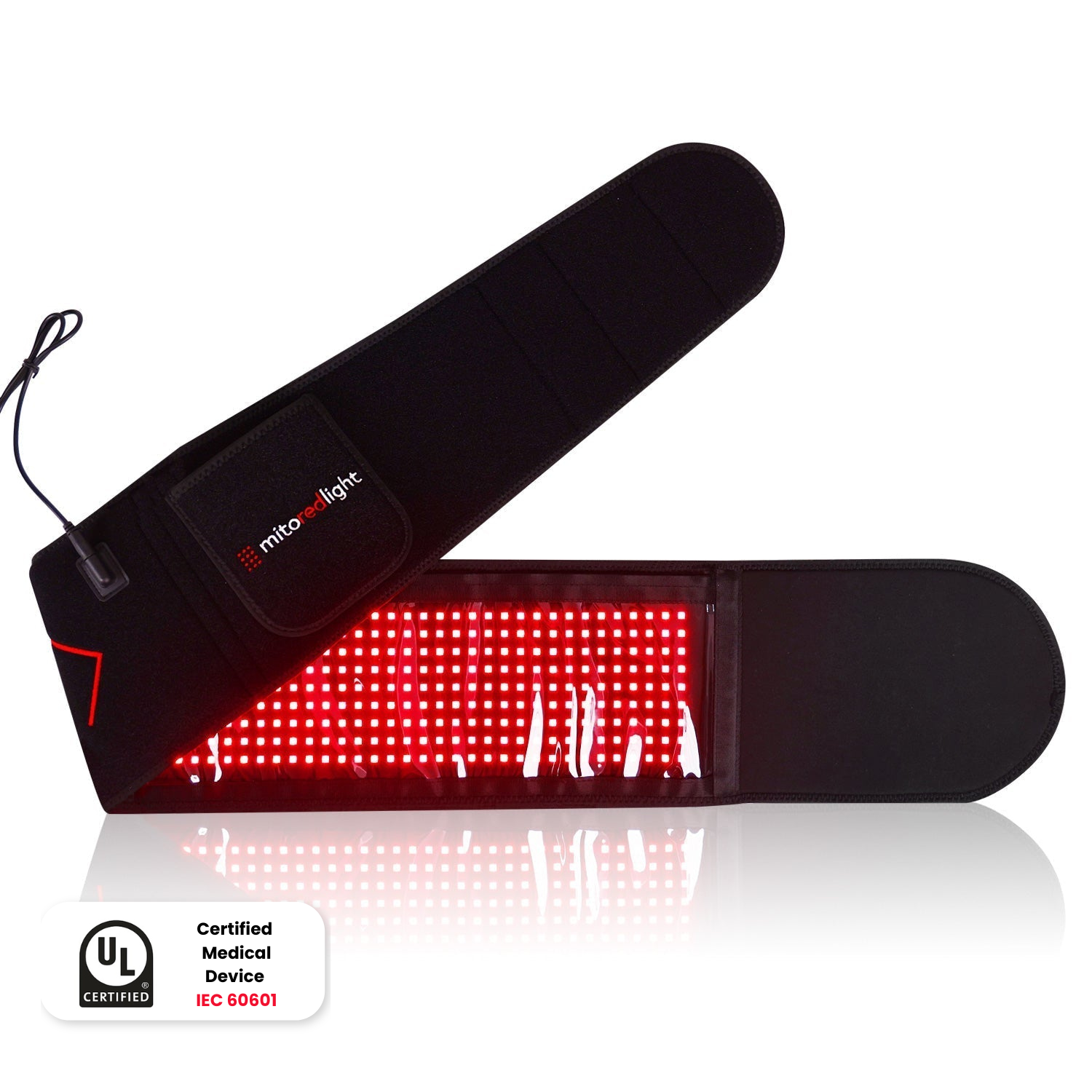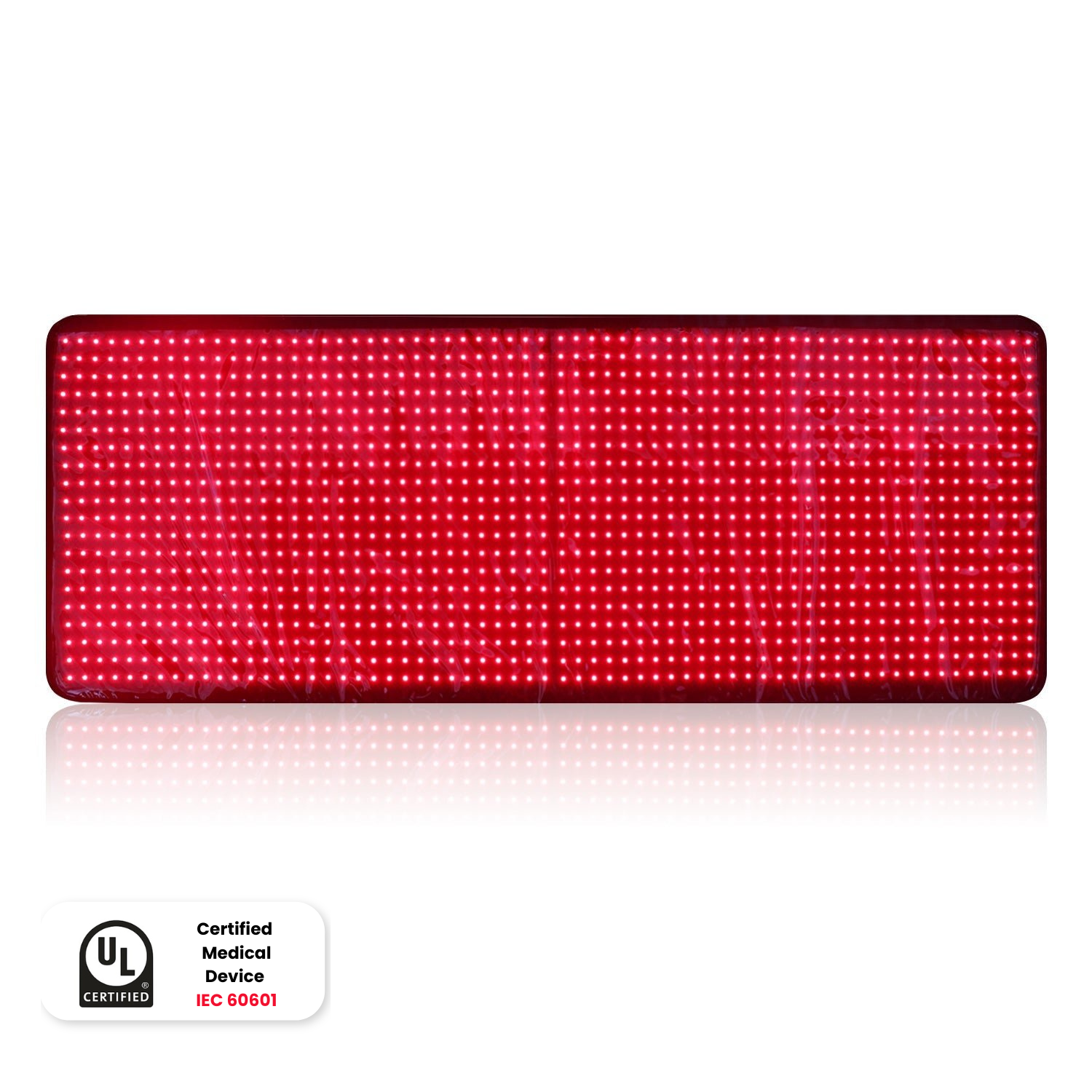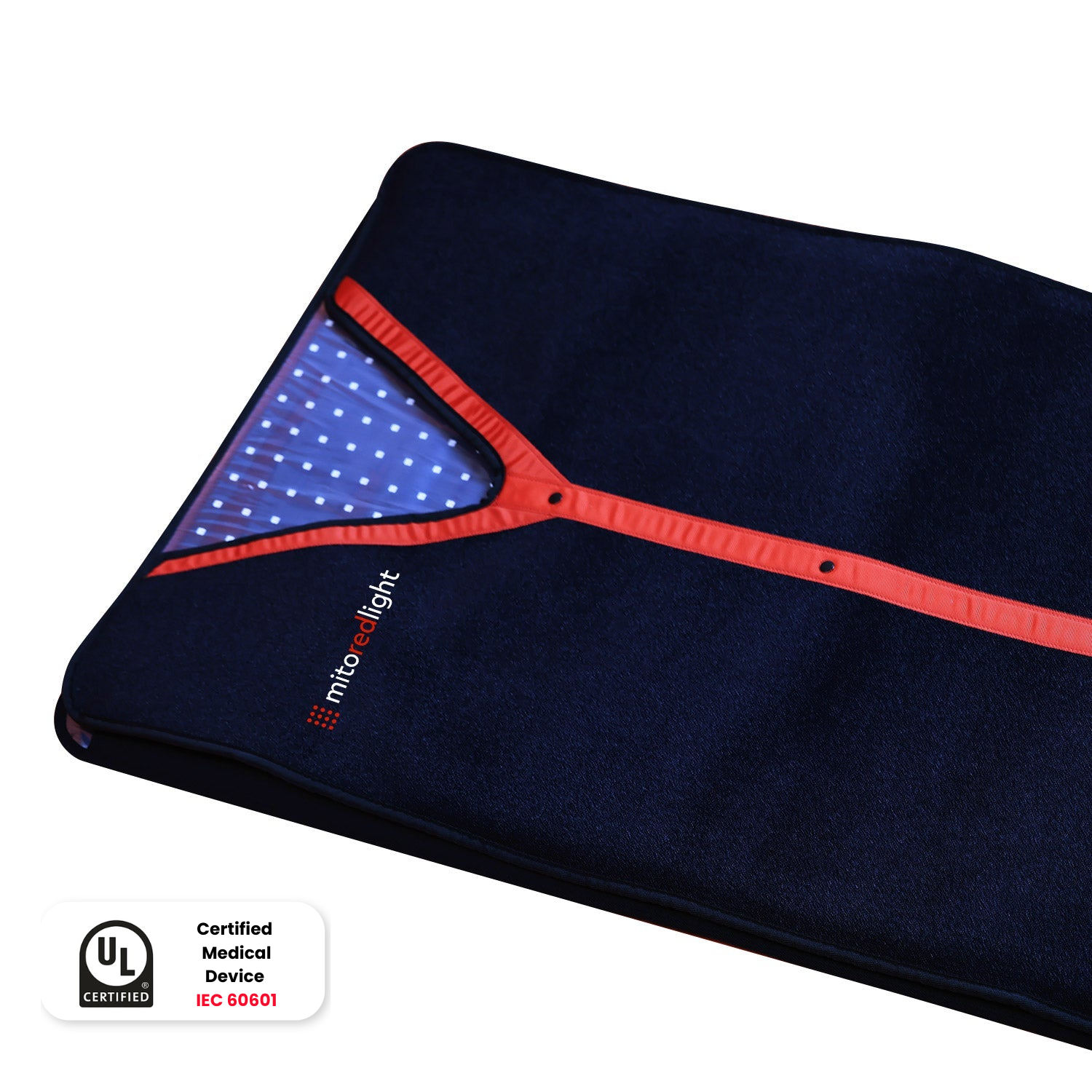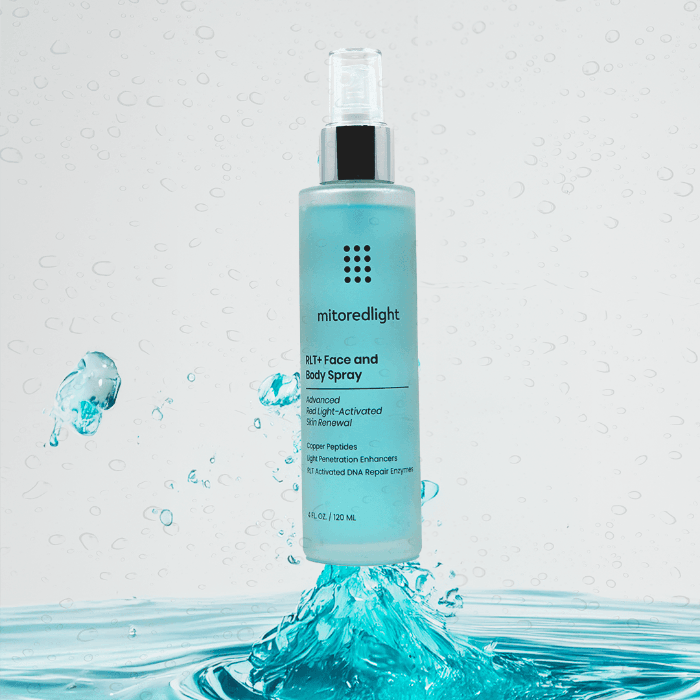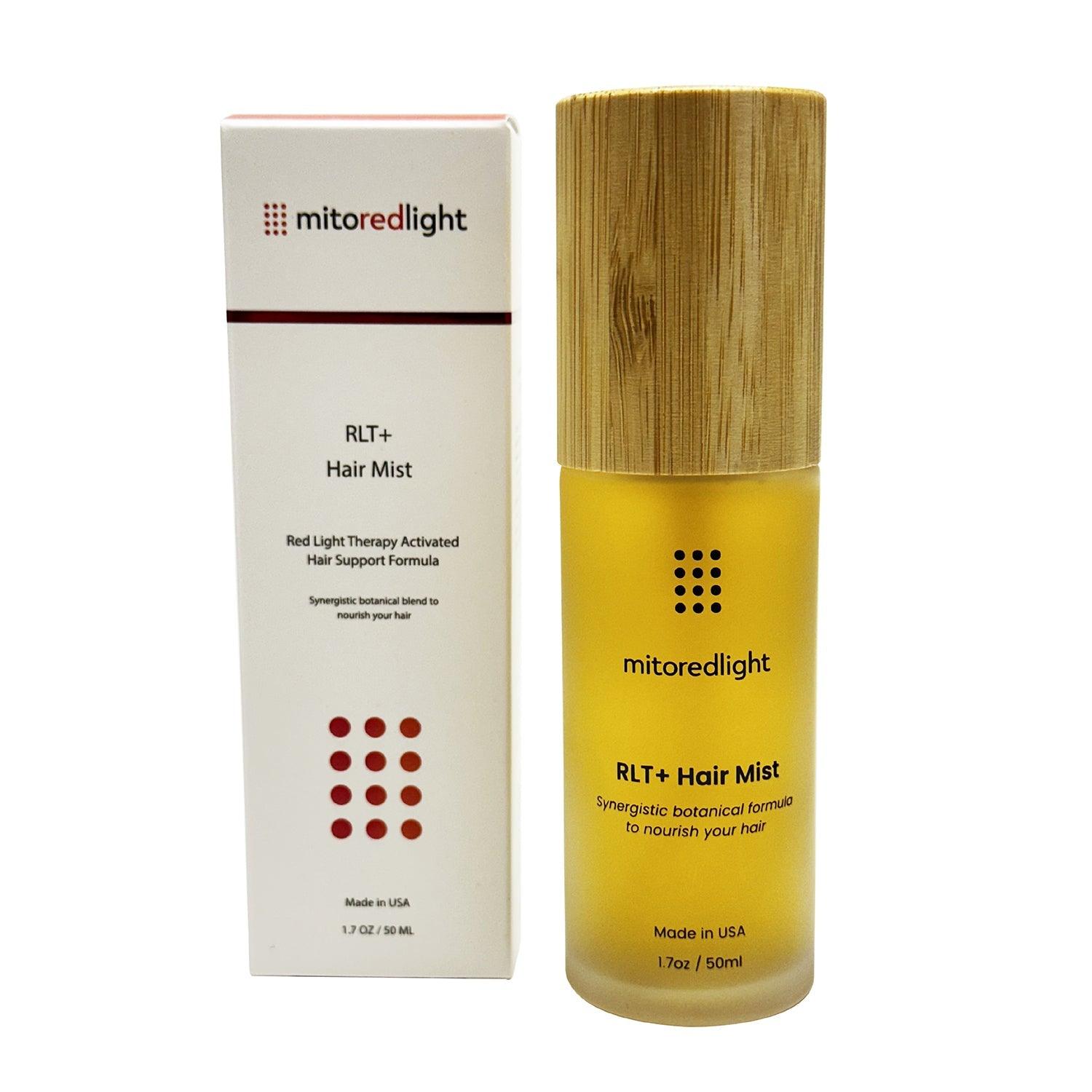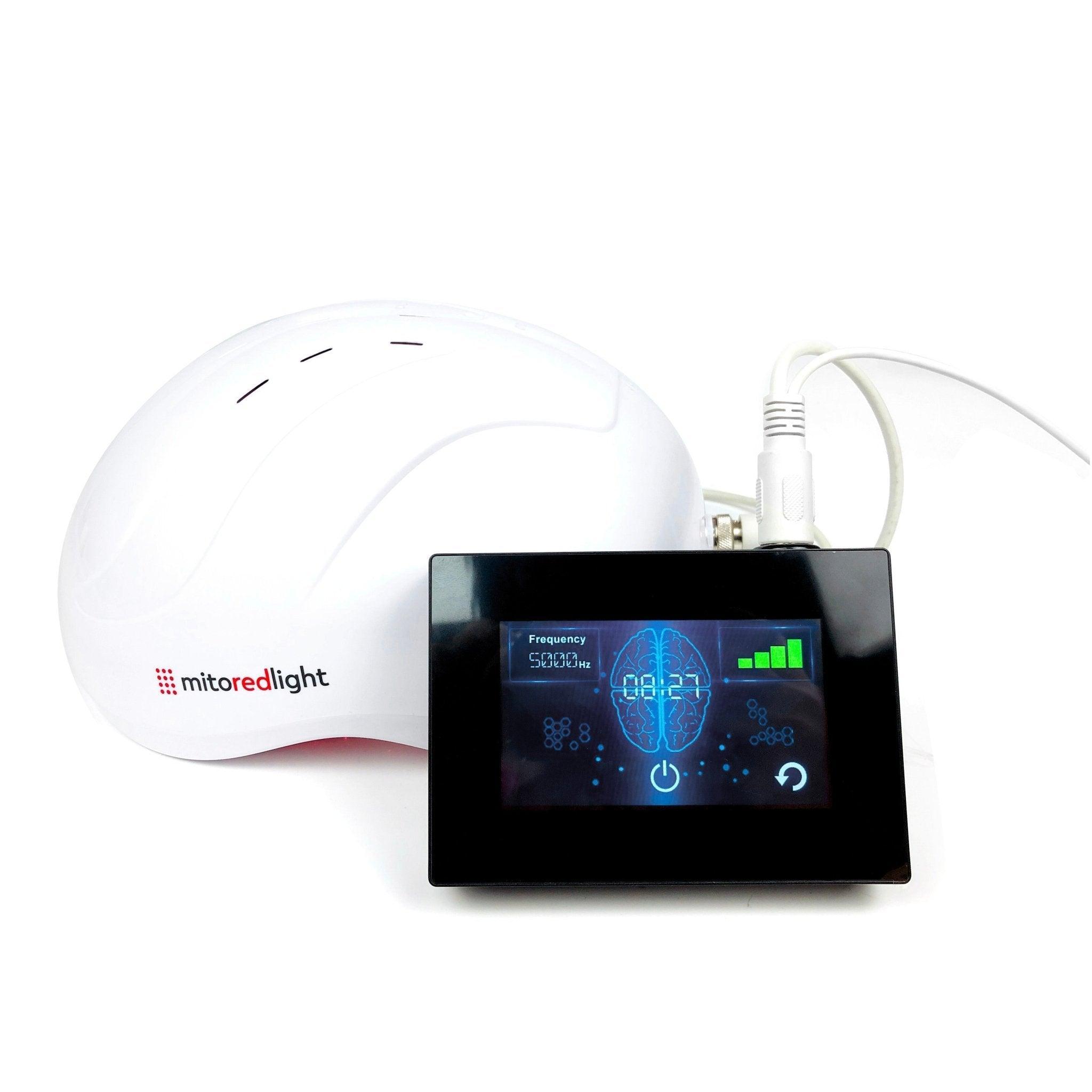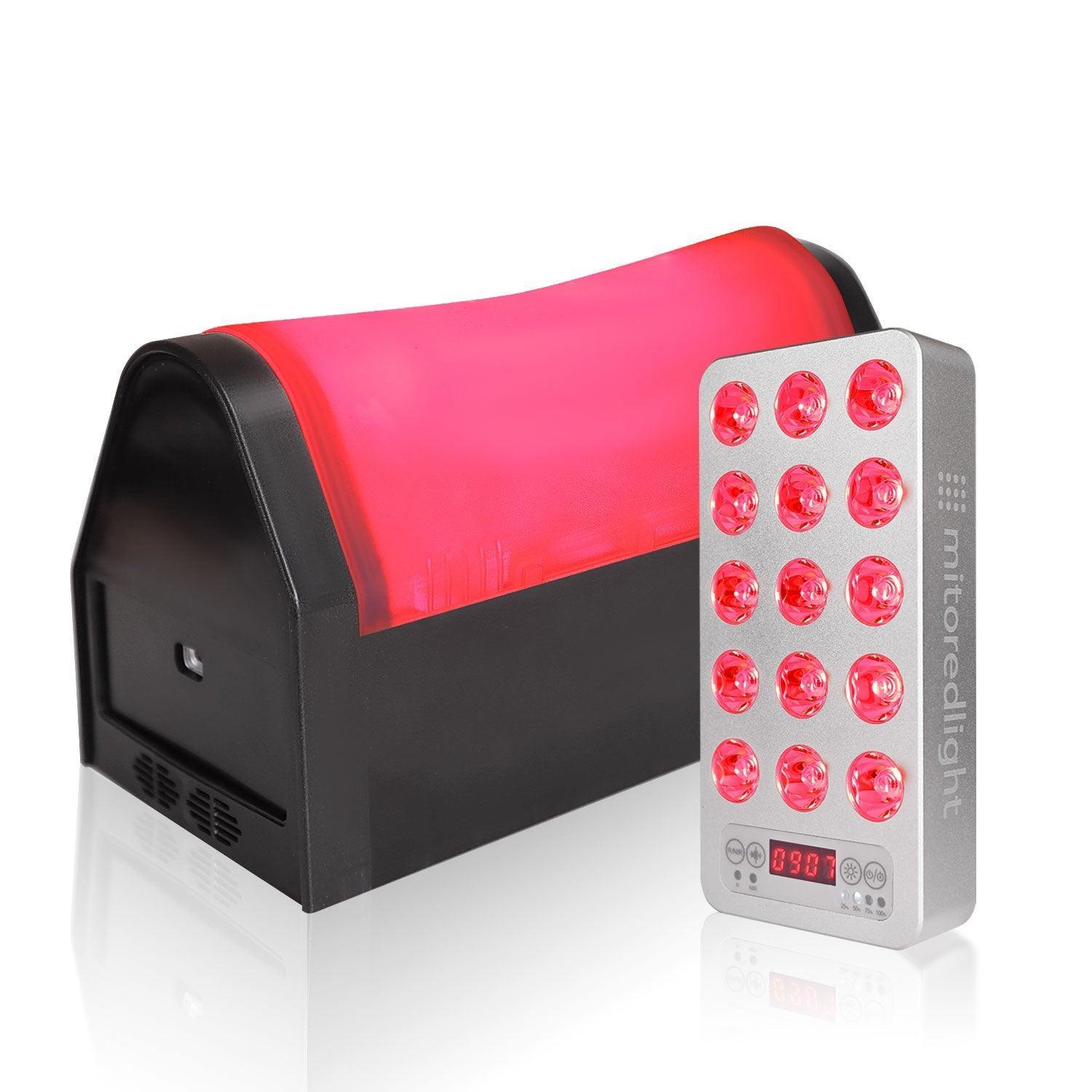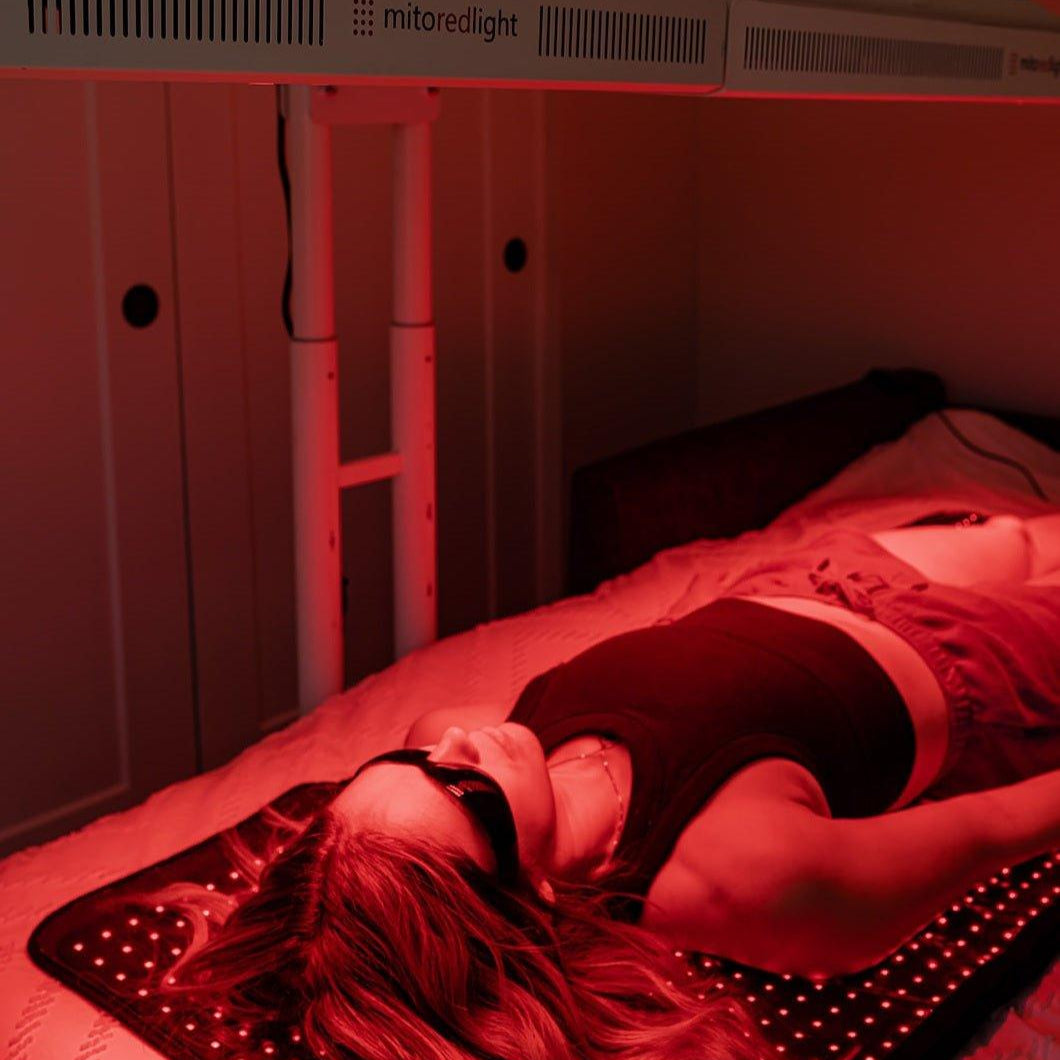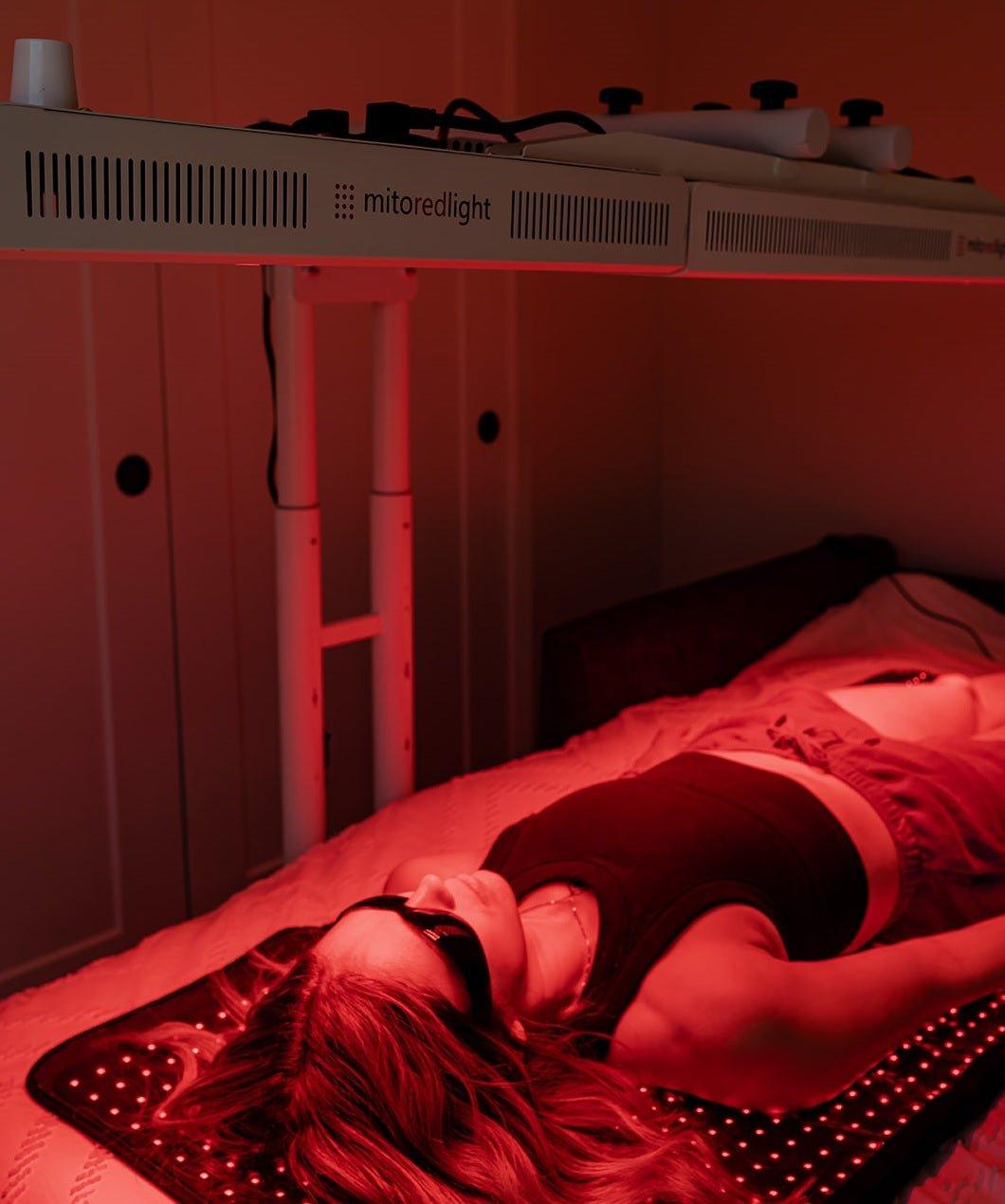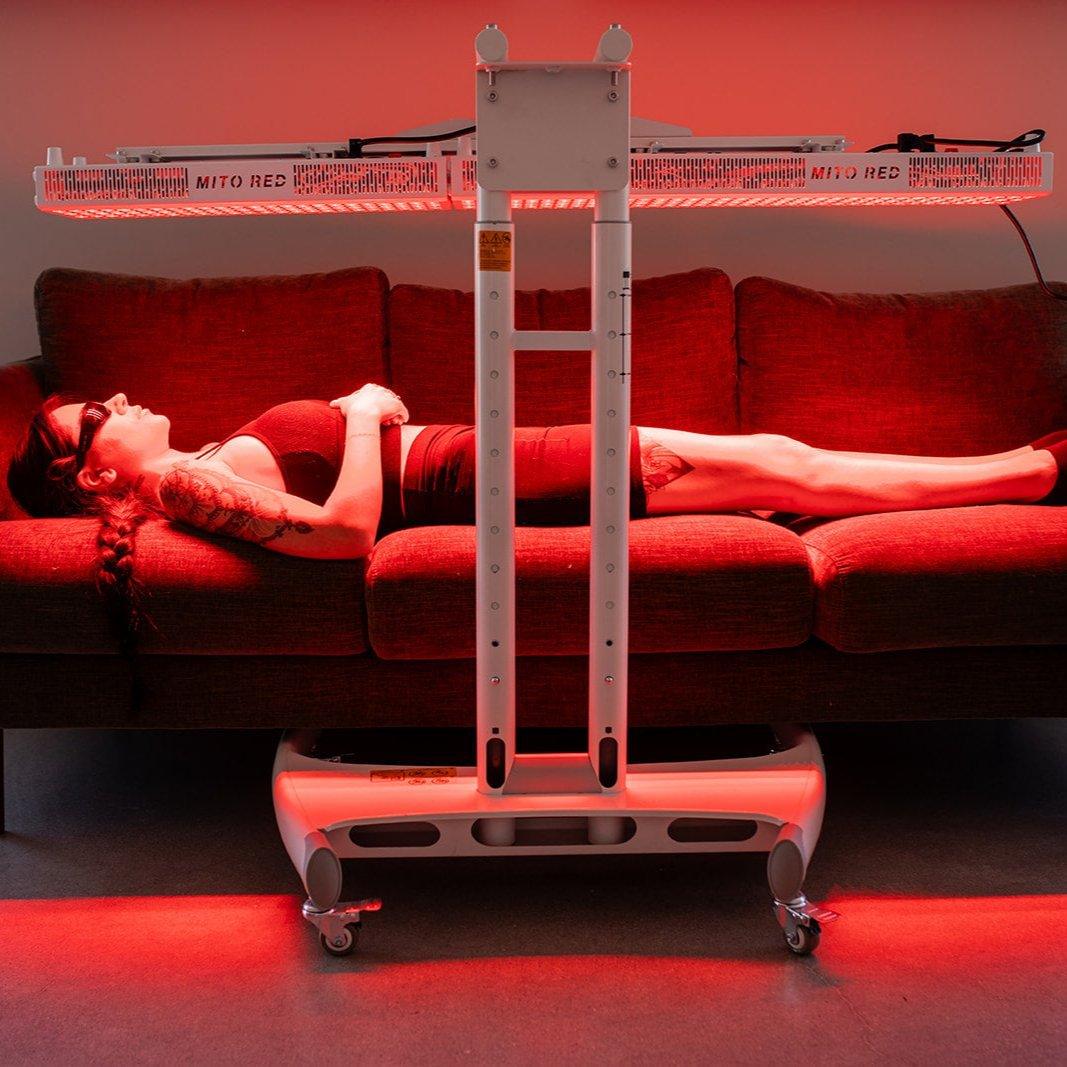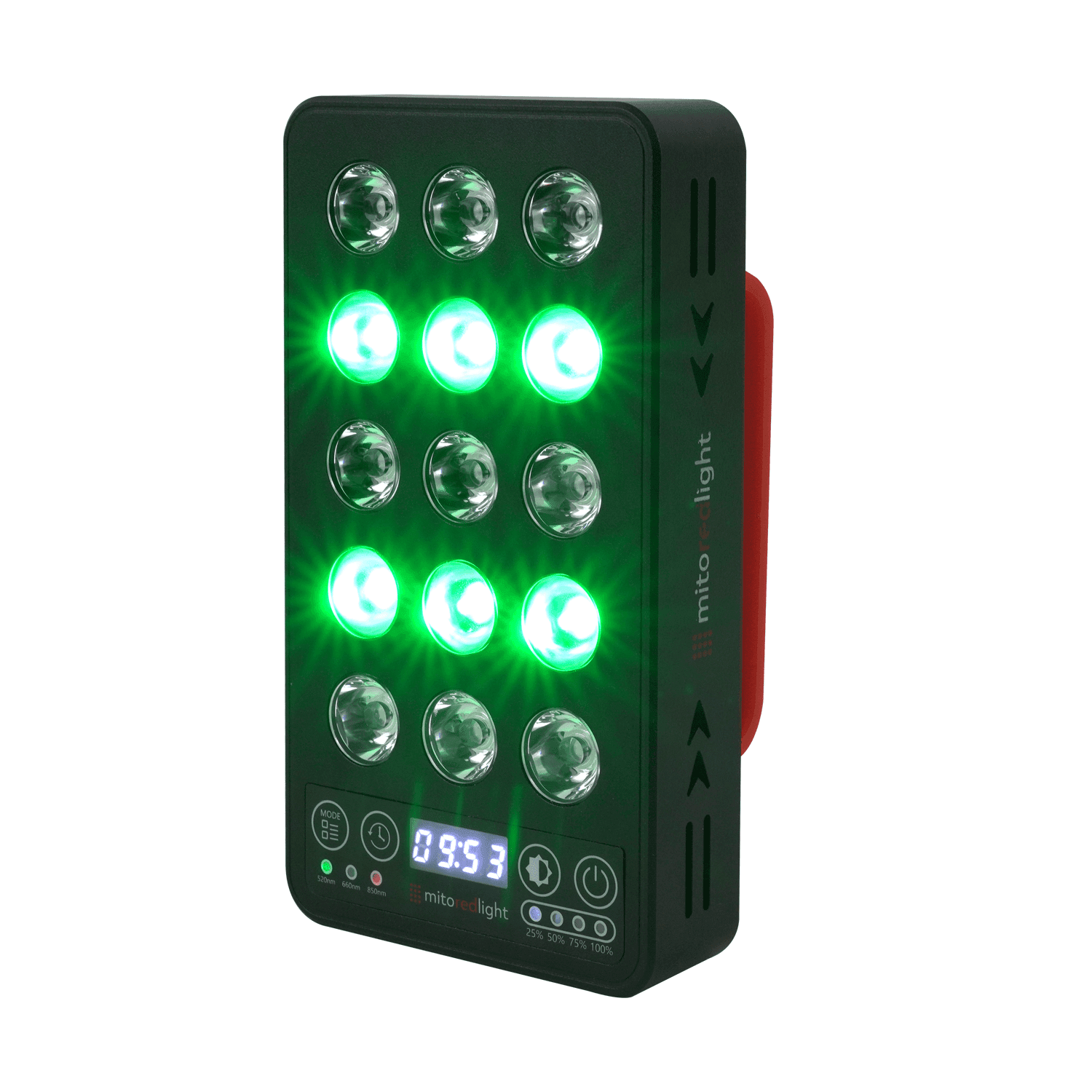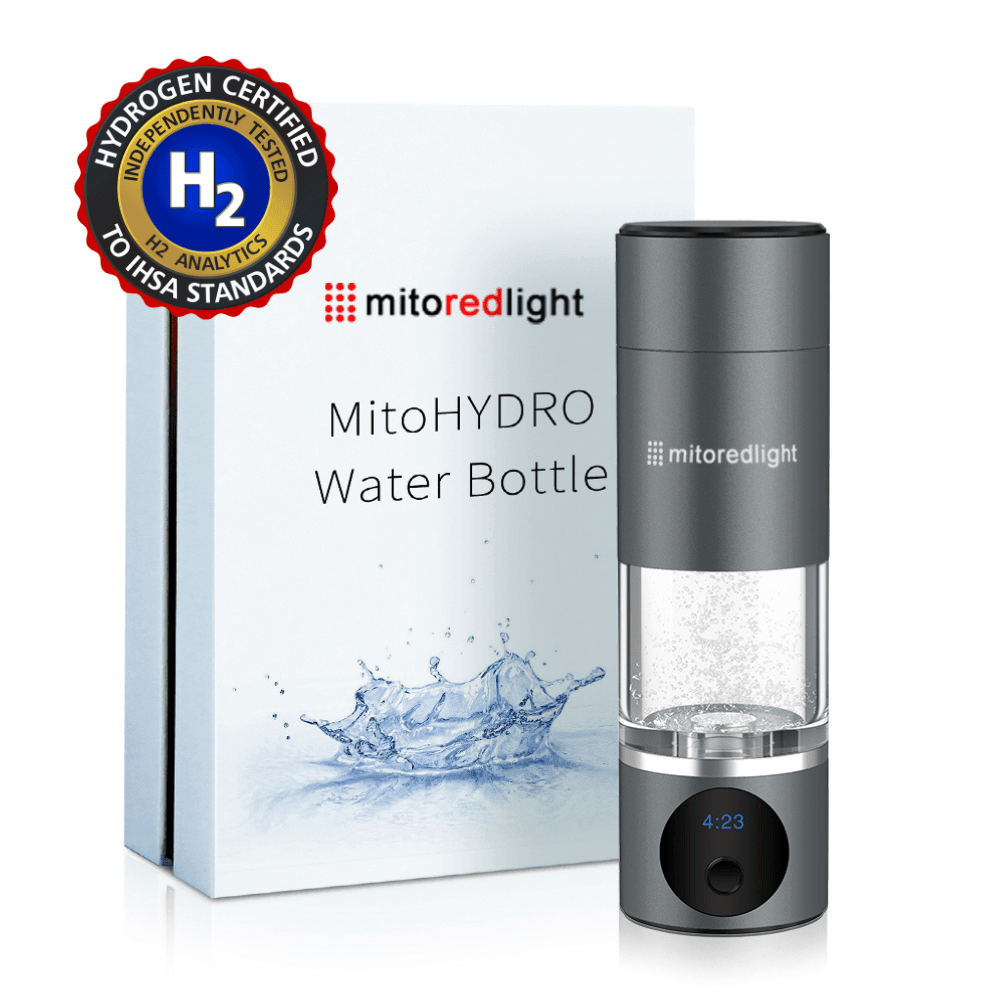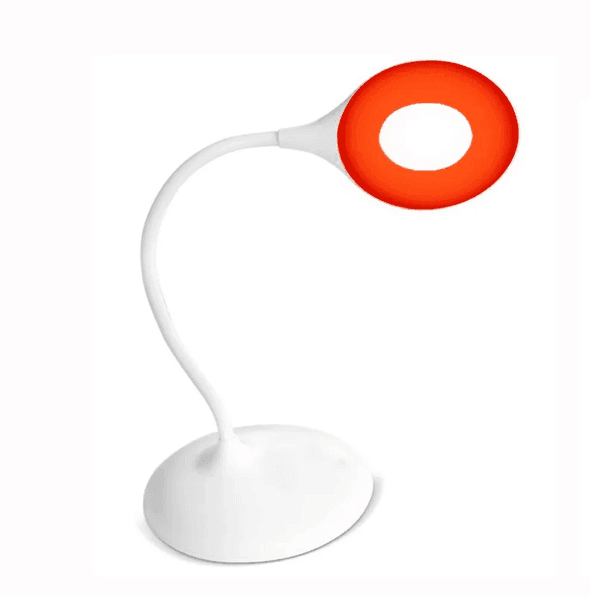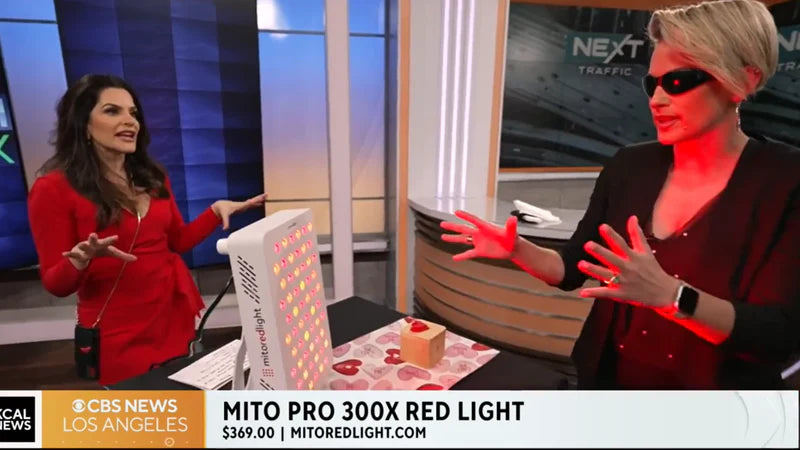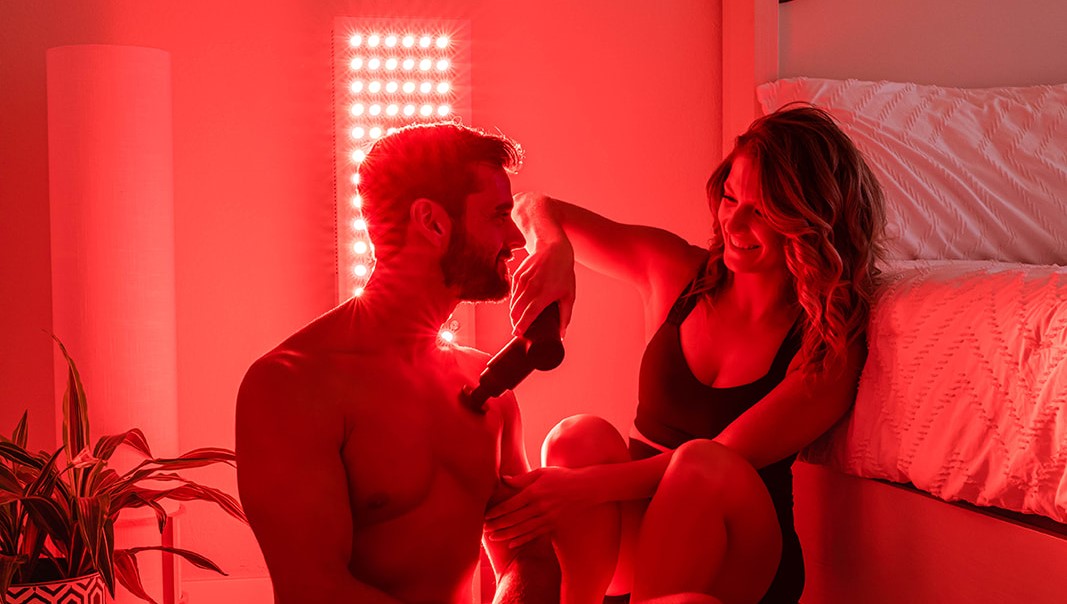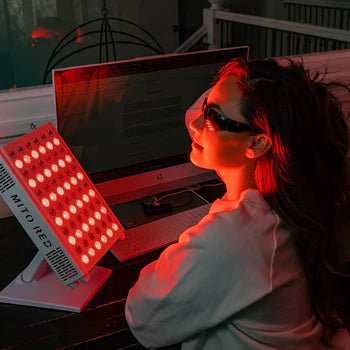DISCLAIMER: Mito Red Light devices are not clinically proven to diagnose, treat, cure, or prevent any medical conditions. Mito Red Light devices are low / risk general wellness devices aimed at affecting the body through supporting cellular function. The scientific studies referenced in this article are for educational and informational purposes only and are meant to educate the reader on the exciting and growing field of phototherapy. To see a list of precautionary warnings and contraindications, click here
Blue light therapy is a safe and non-invasive way to improve your skincare regime, one that May help improve the appearance of blemishes and support skin clarity.
It can be an expensive option if you book with a clinic, as the average package runs anywhere from $1,000 to $2,000 and spans many sessions. However, you can also pick up a blue light therapy device for at-home use. For a few hundred bucks, you’ll have a device you can use regularly for as long as you want.
If you’re in the market for an at-home device, read on to learn which device is best, how to set it up, and how to use it.
Understanding Blue Light Devices
Blue light therapy devices operate on a blue light spectrum, with an average wavelength of between 400 and 470 nanometers. The light penetrates the skin but doesn’t go as deep as red light or near-infrared therapy devices.
Certain wavelengths, like those produced by blue lights, may help reduce surface buildup that contributes to breakouts. It is non-invasive, and while there can be some mild discomfort, it rarely causes any kind of pain, especially if you stick with at-home devices.
The first step in choosing the most suitable device is to find a reliable, reputable company that sells products with FDA Cleared status. Be wary of anything that claims to be “FDA Approved”—this status applies to medications and not blue light devices—as well as any marketing that makes bold, unsubstantiated claims about health benefits and uses phrases like “Medically Approved’.
Blue light therapy devices come in various guises, including:
-
Panels: Mobile units that you can hold near target areas.
-
Masks: Arguably the best option for targeting facial acne, masks like the MitoCLEAR®, which has both red light and blue light settings, are comfortable and convenient and offer full coverage.
-
Flexibles: Includes belts you can wrap around your waist and thighs, like a face mask for other body parts. Although it uses red and not blue light, the MitoQUAD™ is a prime example.
-
Handhelds: These small and convenient wands are ideal for targeting problem areas but not the best if you want complete coverage.
Protocols and Environment
At-home blue light devices are designed to be used for between 5 and 20 minutes at a time, usually for just a few days per week. You don’t need to worry too much about preparing a space, but comfort, convenience, and cleanliness are still very important. Here are a few things you can do to maximize results and minimize discomfort:
-
Wash Your Face Before Use: Warm water and mild soap work best. The goal is to remove all makeup, sunscreen, and fragranced products. Rays may interact with surface layers more effectively when skin is clean and gently exfoliated.
-
Add it to Your Skincare Regime: The most positive outcomes can come from frequent and consistent use, so consider adding a blue light therapy device to your skincare regime. For instance, you could use it in the morning after washing your face and before applying moisturizer.
-
Protect and Moisturize: Apply moisturizer after every session and use sunscreen whenever you leave the house.
-
Avoid Harsh Chemicals: Stay away from retinoids and anything else that could irritate your skin, such as anti-aging creams and strong exfoliators.
-
Protect Your Eyes: Use goggles or eye caps to protect your eyes, as they are sensitive to blue light. The MitoCLEAR® mask, for instance, comes with eye protectors.
-
Relax: Try to sit still and relax while using a blue light mask, panel, wand, or flexible device.
-
Record Your Progress: Take a “before” picture prior to your first session and record your experiences in a journal, accounting for changes in the appearance and texture of your skin. It can take several weeks to see any noticeable difference, so it helps to have something to look back on.
Cost Considerations
An at-home device is obviously a more budget-friendly option when compared to clinical therapy sessions. However, the price of these devices can vary greatly, so where should you invest your money?
As with anything else, as soon as something becomes popular, the market is flooded. Every company that manufactures or sells anything related to lights or electrical devices takes a shot at creating its own blue light product. These devices may seem cheap, but you could be getting something that is ineffective and poorly made, as well as something that hasn’t passed safety standards.
This is especially true if you’re buying a suspiciously low-cost device from a global retail marketplace. It may have been designed, made, and shipped from a country that doesn’t have anywhere near the same safety standards.
When your health is at stake, it’s important to check safety protocols and work with trusted brands. You also want to know that you’re giving this technology the best possible chance to work. After a few weeks of using an ineffective, low-intensity device, you may not experience any visible benefits to your skin and may be very disappointed.
So, if you want the best results, as well as products that will last for many sessions, stick with trusted light therapy specialists and always check customer reviews, testimonials, and FDA clearance status.
When to Consult a Professional
The devices used by dermatologists in professional red light therapy or blue light therapy sessions are typically much stronger than the ones you can buy for home use. A dermatologist discuss your skin goals and offer recommendations, advising on everything from the treatment time and intensity to the use of photosensitivity agents that may influence how light interacts with the skin” (only if absolutely needed).
If you’re convinced that blue light therapy is a good fit for your needs but aren’t getting the results you expect, consult a professional.
Bear in mind, however, that it can take several weeks before you start seeing any changes. Be patient, use the device as instructed, and keep your expectations in check—it can improve the look of your skin over time, but in some individuals, the changes are much more subtle. You may also be more suited to red light therapy—check out our guide on red light vs blue light therapy to learn more.

